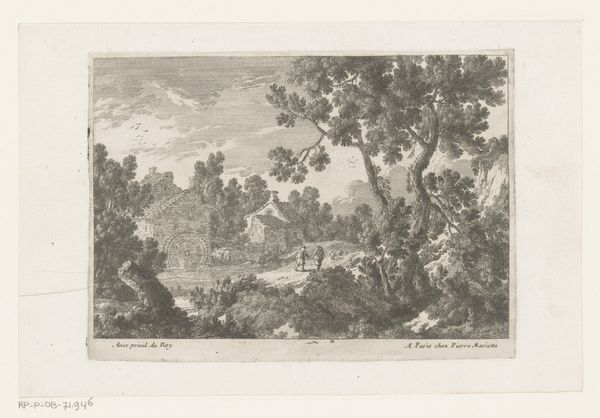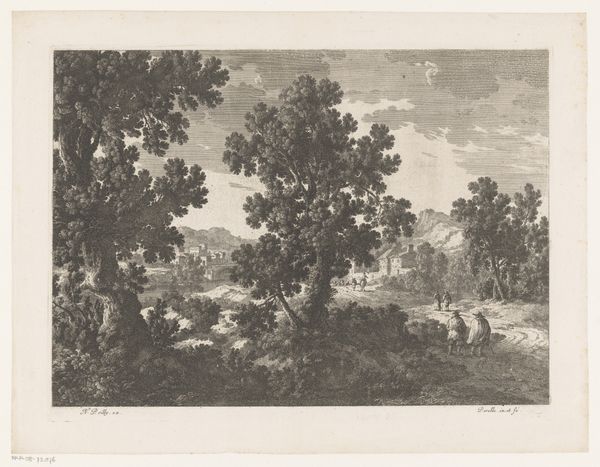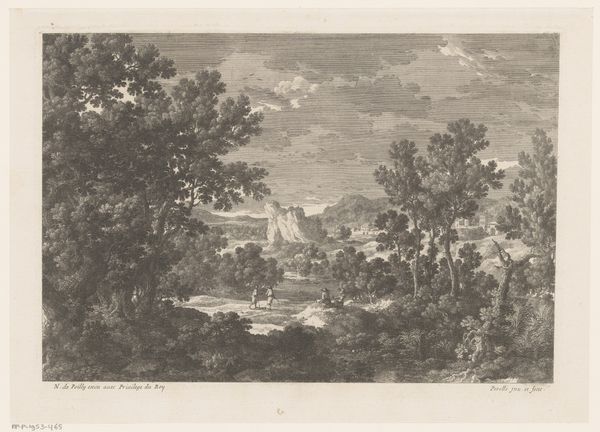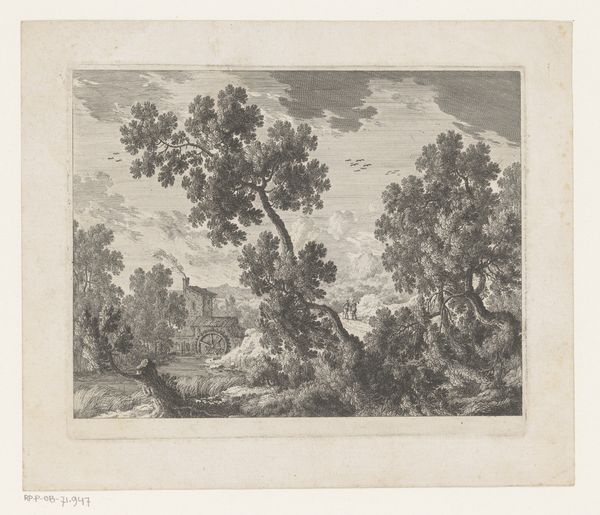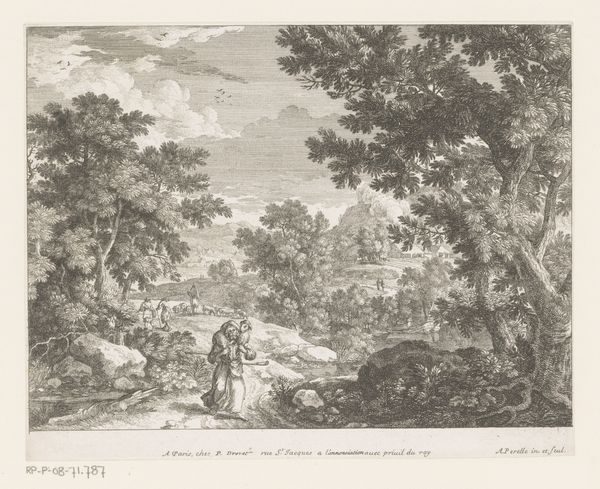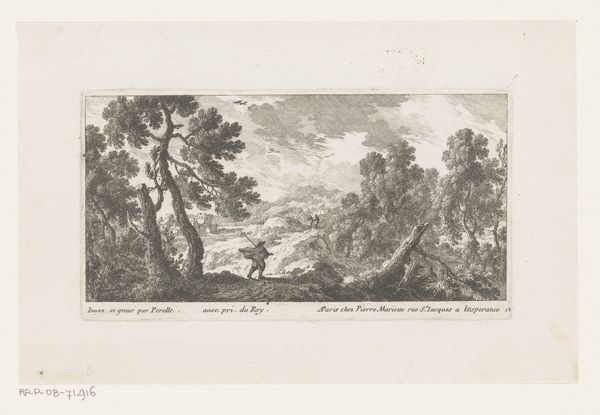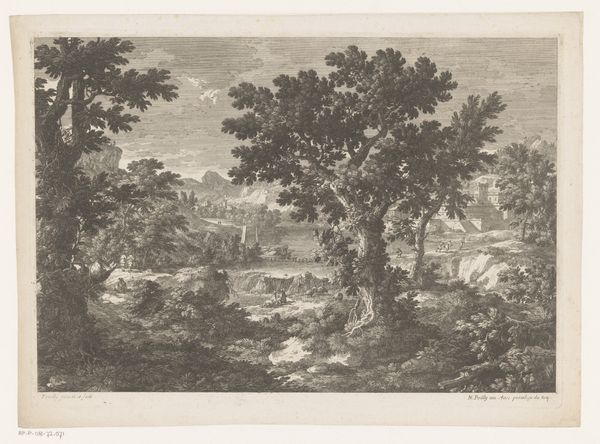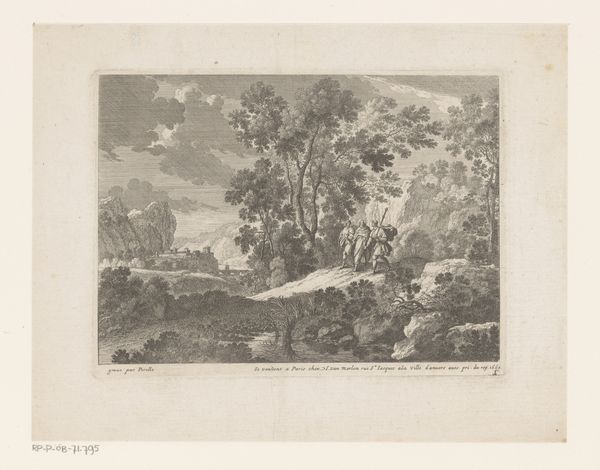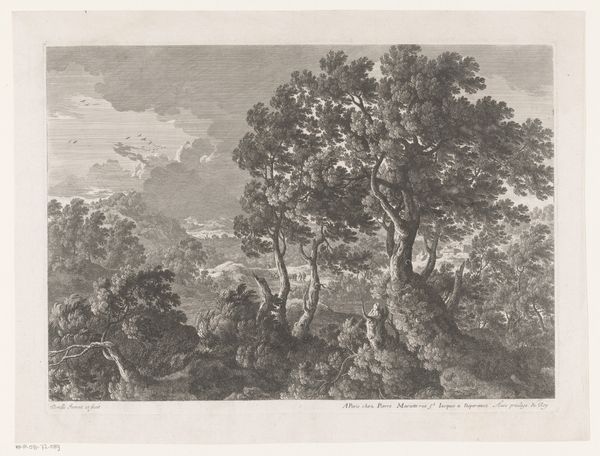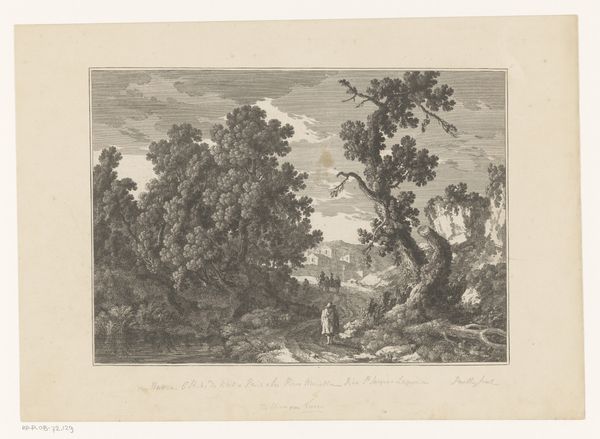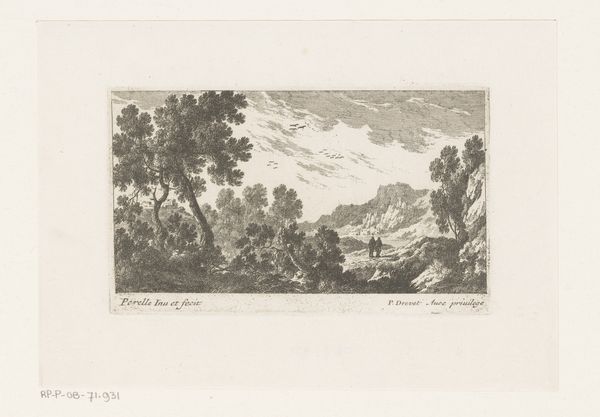
drawing, engraving
#
drawing
#
baroque
#
landscape
#
forest
#
line
#
engraving
Dimensions: height 138 mm, width 196 mm
Copyright: Rijks Museum: Open Domain
Curator: Nicolas Perelle's "Wooded Landscape with Herders and Herd," made between 1613 and 1695, greets us with a scene from a world seemingly untouched by the grand narratives of kings and queens. What strikes you most immediately about this forest idyll? Editor: It's monochrome— stark contrasts that create depth but feel like labor made visible. Look at the precise lines, almost mathematical. This landscape seems less a celebration of nature than an examination of the human presence within it. Curator: Precisely! The image’s creation—via engraving, we see from its meticulous lines and the layering effect of drawing—demonstrates how baroque sensibilities began seeping into everyday experiences of rural life. How does the pastoral setting invite reflections on social structure? Editor: In the context of increasing urbanization, scenes like this became a commodity. Consider who this print was created for, likely not those who experienced that life but rather people buying a vision of rustic harmony disconnected from its harsh realities. What would this piece suggest about the power structures implicit to a ruling elite in the absence of a powerful noble subject? Curator: Well, this image plays directly into the long-standing genre of idealized pastoral settings, which serve a dual function. Yes, the burgeoning middle class likely fantasized about rural tranquility, but simultaneously, these landscapes could allegorize political power: the benevolent ruler mirroring the idealized shepherd, guiding and protecting. Think of Virgil's Eclogues! Perelle positions the herders and cattle very close to the viewer to facilitate the creation of a political parallel between royalty and their dutiful working constituents. Editor: I concede that point—especially if we look closely at the details etched in this medium—the precise control exerted over each mark underscores this idea. Each line, each shadow becomes deliberate. The material process echoes the broader systems of control being idealized in the scene itself, a carefully curated performance of both nature and social hierarchy. Curator: Indeed. The composition, which seems simple at first, is incredibly crafted to showcase not only a scene but a carefully arranged vision of life. Editor: Well, looking at the interplay between production, power and nature, my appreciation for this landscape has shifted! Curator: It’s a perspective to consider! Each observation deepens the discourse and unravels further the cultural tapestry, whether rooted in feminist studies, Marxism or otherwise, surrounding art from ages past.
Comments
No comments
Be the first to comment and join the conversation on the ultimate creative platform.
